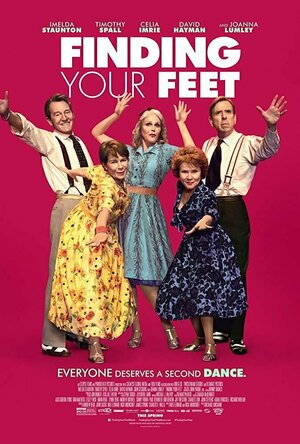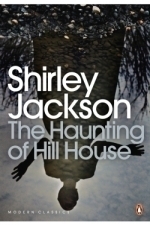
Wiley CIAexcel Exam Review 2016 Focus Notes: Part 1: Internal Audit Basics
Book
Master internal audit knowledge elements for the CIA exam "Wiley CIAexcel Exam Review 2015: Part 3,...
Unfairly Labeled: How Your Workplace Can Benefit from Ditching Generational Stereotypes
Book
A blueprint for managing people, not generations Unfairly Labeled challenges the very concept of...

Barking Dog - Monitor & Control - Bark'n Mad
Lifestyle and Utilities
App
Is your dog barking while you are out? Is the dog next door continually barking? Run monitoring...
Bob Mann (459 KP) rated Finding your feet (2018) in Movies
Sep 29, 2021
Sandra (Imelda Staunton, “Pride“) – now Lady Sandra, after her husband’s latest knighthood – is in a predictable, sex-free but reasonably happy marriage to legal beagle Mike (John Sessions, “Denial“, “Florence Foster Jenkins“) when her world is shaken to its core on discovering that Mike has been having a five-year affair with her best friend Pamela (Josie Lawrence). Moving in with her Bohemian sister Bif (Celia Imrie, “Bridget Jones Baby“), she struggles to integrate into her decidedly lower class lifestyle and find common ground with Bif’s dance club friends Charlie (Timothy Spall, “Denial“, “Mr Turner”), Ted (David Hayman) and Jackie (Joanna Lumley, “The Wolf of Wall Street“).
Can Sandra turn her downward spiral around and find love and happiness again? Well, the posters scream “The Feel Good Film of the Year” so you don’t need to be a rocket scientist to know the answer to that! But it’s a bumpy journey for sure.
Getting all the acting honours is Timothy Spall, who is far too good to be buried away in this small British rom com. To watch him do “ordinary bloke doing ordinary things” is an absolute delight. He adds class and distinction to every scene he’s in, especially for those concerned with his truly tragic and upsetting back-story. Running a close second is Celia Imrie who has a wicked smile off to perfection and adds a lot of emotional depth to her performance: and she needs the range, since she too is on a pretty emotional journey through the second half of the film.
John Sessions and Josie Lawrence – old compatriots of course from the original version of TV’s “Whose Line Is It Anyway” – also deliver marvellous cameo performances, as does Phoebe Nicholls (“The Elephant Man”, “Downton Abbey”) as the tennis playing friend Janet.
Less convincing for me was Imelda Staunton, particularly in the first half of the film: for me she never quite pulls off the icy cold emotional wreck of Sandra, but is much better once the thaw has set in.
The film is written by Meg Leonard (in a debut script) and Nick Moorcroft (who did the “St Trinians” scripts). And there are some funny lines in there, although it has to be said that there are not enough of them. The majority of the best ones in fact are in the trailer, never bettered by Joanna Lumley’s zinger…. “My last marriage ended for religious reasons…. he thought he was God and I didn’t”! There’s not much more room for comic lines, since the rest of the script is stuffed with the dramatic outcomes from various flavours of old-age malady. Fortunately I was one of the younger members of the generally grey-haired audience, but for those further up the scale it must have been like staring into the void!
The film will win no awards for choreography, since the dance scenes are gloriously inept and out of sync. But this all rather adds to the charm of the piece.
Directed by Richard Loncraine, director of the equally forgettable Brit-flick “Wimbledon” and the rather more memorable “Brimstone and Treacle”, this is as Douglas Adams would have said “Mostly Harmless”: a film that most over-50’s will find a pleasant way to spend two hours. But go in expecting a drama with comic moments, rather than the hilarious comedy predicted by the trailer, and you will be better prepared.
(I should comment that the rating below is my view: my illustrious wife declared it a triumphant chick-flick and gave it FFFFf).
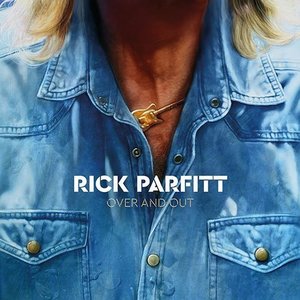
Over and Out by Rick Parfitt
Album
Featuring 10 brand new songs, including the title track that broke hearts anew when it was played at...
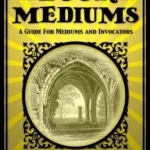
The Book on Mediums: A Guide for Mediums and Invocators
Book
The Book on Mediums, also known as The Mediums Book, was written by Allan Kardec and originally...
Hadley (567 KP) rated The Haunting of Hill House in Books
Apr 19, 2019
The story is still worth reading because Jackson's story telling is something that is missing in literature today. The reader is introduced to characters that are different enough to be interesting; their development is just right that it leaves the reader satisfied. The story moves along well enough that the pace keeps us from getting bored. And each turn of the page keeps the reader guessing what is going to happen next- a must for any ghost story.
In 'The Haunting of Hill House,' Jackson mostly focuses on the character Eleanor - a woman who recently lost the sickly mother she had taken care of for years, to receiving an invitation for a paranormal experiment at the infamous Hill House. Eleanor also seems to be the main character affected by the house, not only having her name written on a wall, but also having her named called out by spirits during an automatic writing session with them.
Our first introduction to the Hill House happens as Eleanor arrives: "No Human eye can isolate the unhappy coincidence of line and place which suggests evil in the face of a house, and yet somehow a maniac juxtaposition, a badly turned angle, some chance meeting of roof and sky, turned Hill House into a place of despair, more frightening because the face of Hill House seemed awake, with a watchfulness from the blank windows and a touch of glee in the eyebrow of a cornice. Almost any house, caught unexpectedly or at an odd angle, can turn a deeply humorous look on a watching person; even a mischievous little chimney, or a dormer like a dimple, can catch up a beholder with a sense of fellowship; but a house arrogant and hating, never off guard, can only be evil. This house, which seemed somehow to have formed itself, flying together into its own powerful pattern under the hands of its builders, fitting itself into its own construction of lines and angles, reared its great head back against the sky without concession to humanity. It was a house without kindness, never meant to be lived in , not a fit place for people or for love or for hope. Exorcism cannot alter the countenance of a house; Hill House would stay as it was until it was destroyed."
We never see Hill House through any other character's eyes, and the viewpoints mostly come from Eleanor (a missed opportunity,I think). Everyone who arrives at the house feels uneasy about it: doors and curtains close on their own, unexplained banging noises down the hallways(only at night), the chattering and laughter of children, and with an oddly placed cold spot. Yet,to the reader's dismay, nothing is fully explained by the end of the story - no apparitions show up, no one seems harmed by anything unseen (although, the character, Luke, suddenly shows up with a bruised face that is never discussed), and the reader ends up wondering if this really is a product of mass psychosis. It almost seems like Jackson ended the story abruptly just to finish it(the book is only a little under 200 pages). She set up wonderful scenarios, but without explanations, we're left with a very empty feeling.
Nearing the end of the book, the doctor, John Montague, who has ran the entire experiment, has his wife,Mrs. Montague,arrive a few days later, who seems to know more about contacting spirits than he does: "The library? I think it might do; books are frequently very good carriers, you know. Materializations are often best produced in rooms where there are books. I cannot think of any time when materialization was in any way hampered by the presence of books." And with the arrival of Dr. Montague's wife, we get one of the major experiences in the entire book. Although her character is quite annoying- even seen through the eyes of other characters- she brings some of the most ghost story elements, one of which is her automatic writing sessions: "Planchette felt very strongly about a nun, John. Perhaps something of the sort- a dark, vague figure, even- has been seen in the neighborhood? Villagers terrified when staggering home late at night?" None of the characters, besides Mrs. Montague's companion, Arthur, believe her automatic writing sessions are real, even after Eleanor's name is brought up during one. As I stated before, without any explanations, the reader is even led to believe that nothing was meant to come of these sessions whatsoever.
The ghost story elements may not have been strong in the story, but the characters make up for them. They constantly question what they are experiencing and/or seeing, they question their surroundings, and they question each other -Jackson does an amazing job weaving paranoia into the story line.
One of the more shocking and unbelievable scenes is when Eleanor is suddenly not fearful of the house anymore: "And here I am, she thought. Here I am inside. It was not cold at all, but deliciously, fondly warm. It was light enough for her to see the iron stairway curving around and around up to the tower, and the little door at the top. Under her feet the stone floor moved caressingly, rubbing itself against the soles of her feet, and all around the soft air touched her, stirring her hair, drifting against her fingers, coming in a light breath across her mouth, and she danced in circles. No stone lions for me, she thought, no oleanders; I have broken the spell of Hill House and somehow come inside. I am home, she thought, and stopped in wonder at the thought. I am home, I am home, she thought; now to climb." It was as if Eleanor was a completely different person in just a few pages.
I do have a couple of problems with 'The Haunting of Hill House,' mostly centering around the use of run-on sentences and extra long paragraphs. The run-on sentences are a waste of time because Jackson seems to merely elaborate on something that could be easily explained or experienced with fewer words. The paragraphs, however, need to be broken up for scene transitioning purposes -when she transitions from one scene to the next, she can confuse the reader with them: one paragraph will have all the characters in the dining area, but in that same paragraph, just a few sentences down, Jackson has the characters suddenly in the parlor,drinking Brandy. Maybe the intention was to make the reader feel paranoid and uneasy like the characters in the book, but it was certainly not needed with the way of Jackson's style of writing.
With all that said, it's easy to see why this book is a popular classic. The writing is strong, using enough descriptions to put the reader in Hill House with all of its paranormal beings. And no matter who you are, you are able to find at least one of the lead characters as a favorite. I feel the book is a must-read for anyone interested in the paranormal, because Jackson brings out the occult interest that was going on around 1959 - when she published 'The Haunting of Hill House;' everything from cold spots to the use of a planchette for automatic writing.
I recommend this book, but if you're looking for scares, you must look elsewhere.

Screens VNC
Productivity and Business
App
Leave your computer behind and travel light! Screens lets you connect back to your Mac, Windows or...

Interval Timer-Tabata,HIIT,Crossfit
Health & Fitness and Lifestyle
App
Interval Timer is a timer application telling the user the beginning and the end of an exercise....
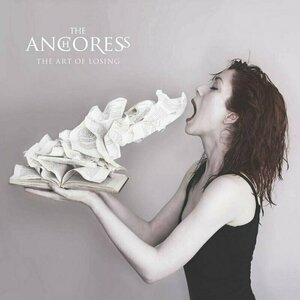
The Art of Losing by The Anchoress
Album
AWARD-WINNING WELSH MULTI-INSTRUMENTALIST THE ANCHORESS RETURNS WITH HER CRITICALLY ACCLAIMED SECOND...

